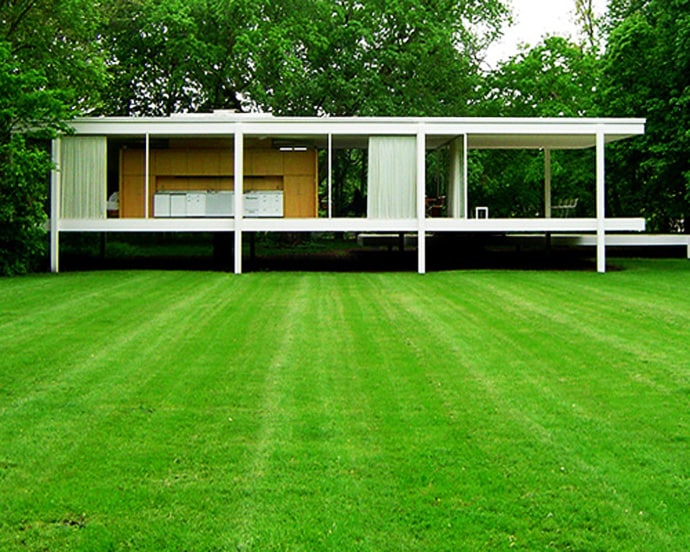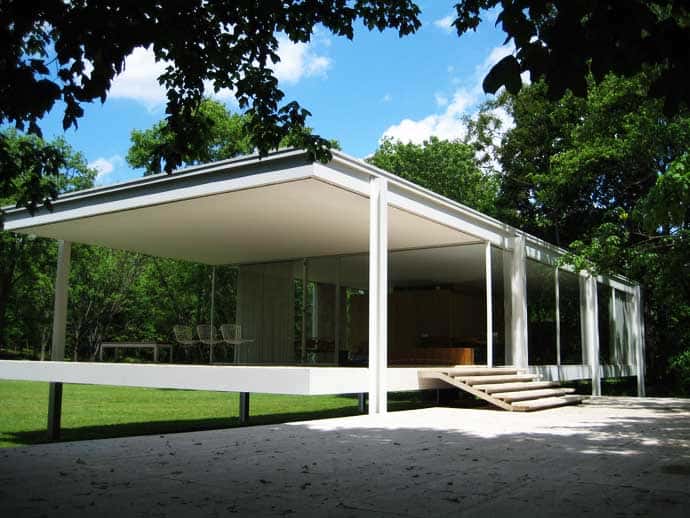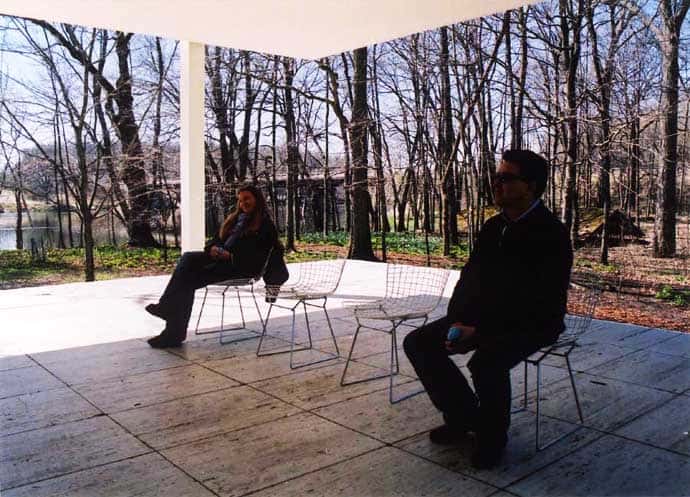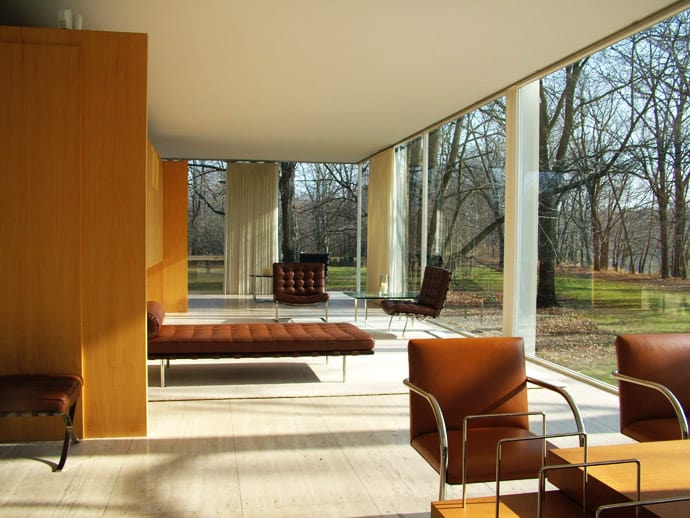The Farnsworth House, built by Ludwig Mies van der Rohe in 1951 and located near Plano, Illinois, is one of the most famous examples of modernist domestic architecture and was considered unprecedented in its day. The Farnsworth House is one of the most significant of Mies van der Rohe’s works, equal in importance to such canonical monuments as the Barcelona Pavilion, built for the 1929 International Exposition and the 1954-58 Seagram Building in New York. Its significance is two-fold. First, as one of a long series of house projects, the Farnsworth House embodies a certain aesthetic culmination in Mies van der Rohe’s experiment with this building type. Second, the house is perhaps the fullest expression of modernist ideals that had begun in Europe, but which were consummated in Plano, Illinois. view more here

Celebrating Mies’ Birthday
Mies van der Rohe believed that architecture should express the essence of its civilization – that the same things guiding our lives should build our homes, museums and offices. His buildings speak to our hope for simplicity, shaping our lived environment, and in doing so, illuminating life itself.
Ludwig Mies van der Rohe, along with Walter Gropius and Le Corbusier, are widely regarded as the pioneering masters of modern architecture. Mies, like many of his post-World War I contemporaries, sought to establish a new architectural style that could represent modern times just as Classical and Gothic did for their own eras. He created an influential twentieth century architectural style, stated with extreme clarity and simplicity.
His mature buildings made use of modern materials such as industrial steel and plate glass to define interior spaces. He strived towards an architecture with a minimal framework of structural order balanced against the implied freedom of free-flowing open space. He called his buildings “skin and bones” architecture. He sought a rational approach that would guide the creative process of architectural design.
Famous for his dictum ‘Less is More’, Mies attempted to create contemplative, neutral spaces through an architecture based on material honesty and structural integrity. Over the last twenty years of his life, Mies achieved his vision of a monumental ‘skin and bone’ architecture. His later works provide a fitting denouement to a life dedicated to the idea of a universal, simplified architecture. view more here.






